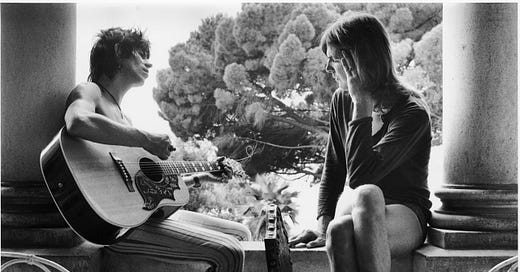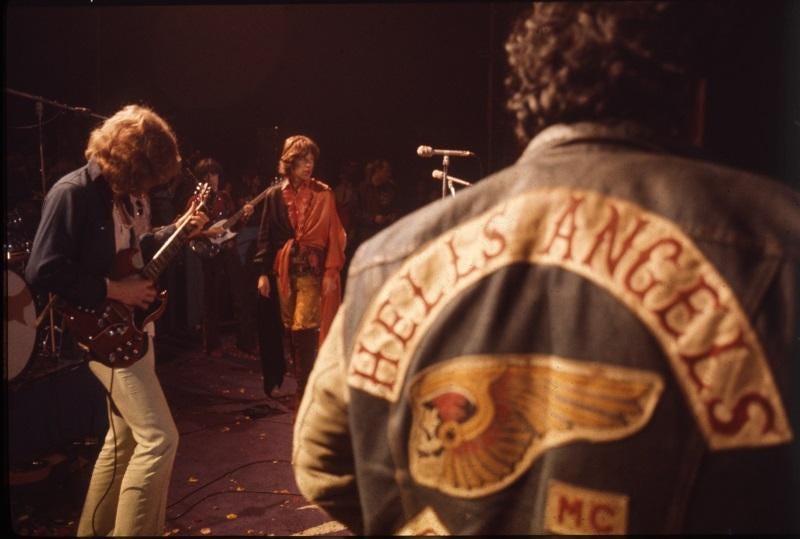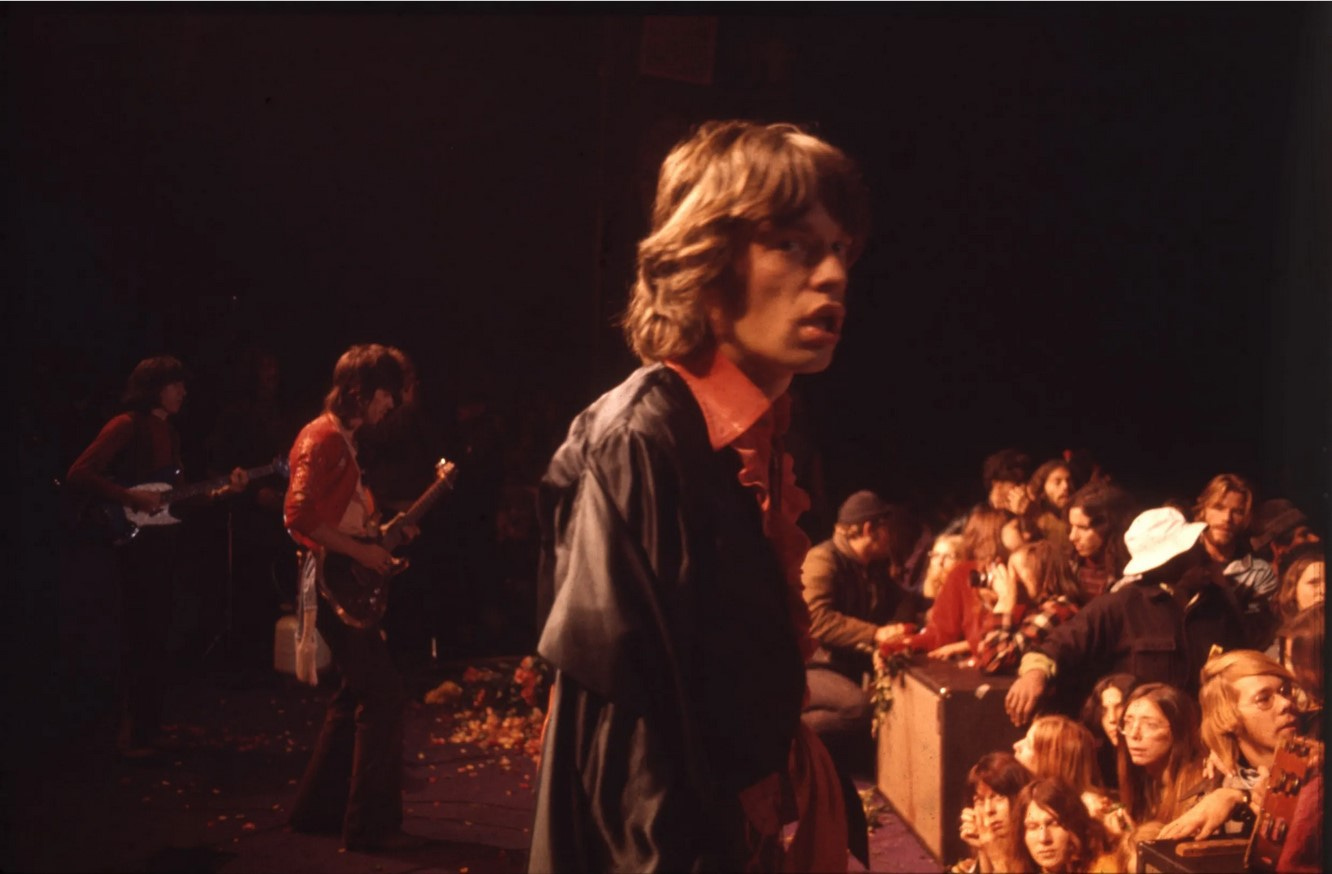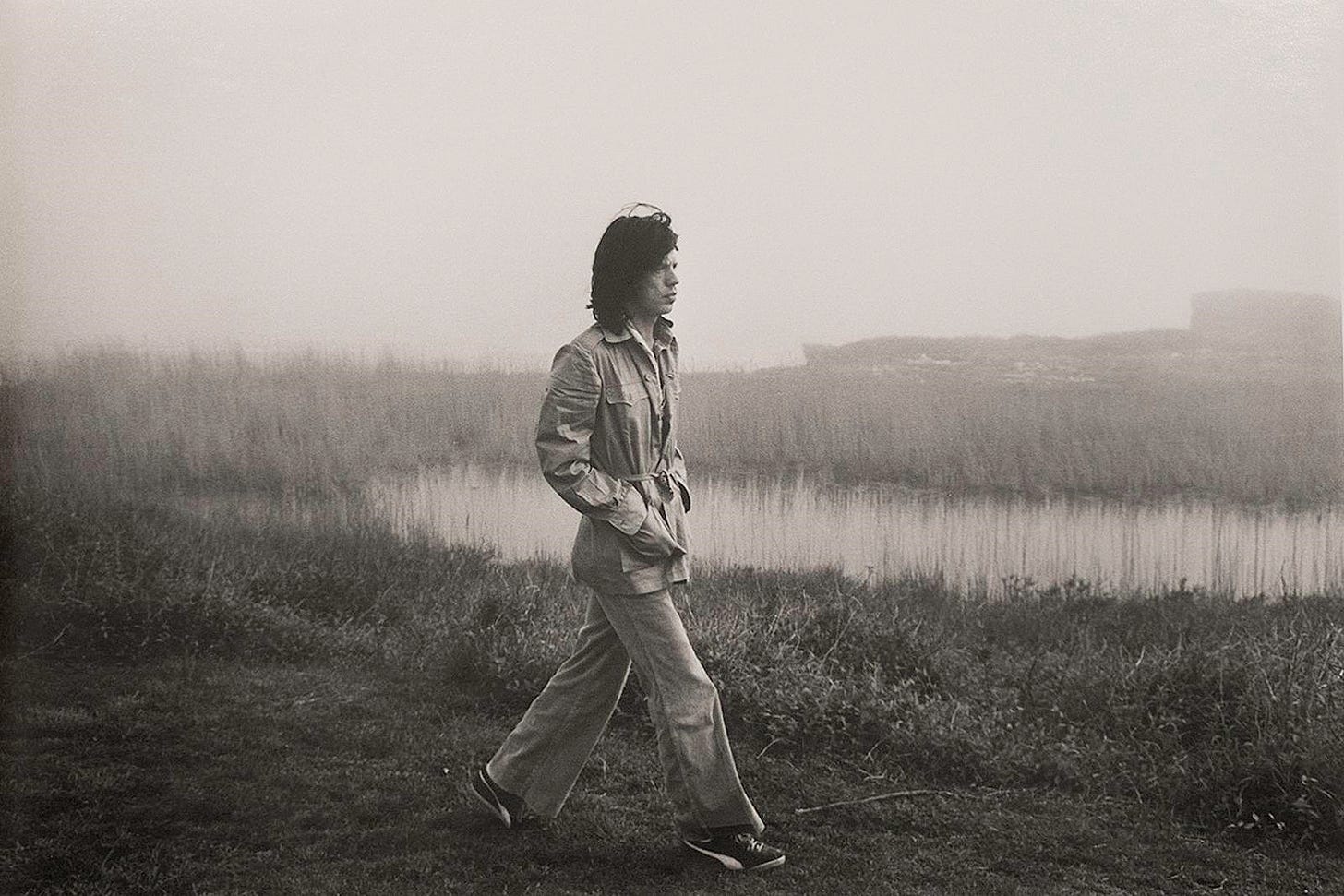Lesser Known Lore of The Rolling Stones - Part II
More True Stories of the World's Greatest Rock N' Roll Band
Welcome back to Part II of our very special mega feature on the group that needs no introduction, the Greatest Rock N’ Roll Band in the World, the Rolling Stones!
1000% Magazine is proud to present another five lesser-known true stories of the rhythm and blues band born in London in 1962 that has survived over sixty years to enter the pantheons of musical and cultural mythology.
At whatever moment you happen to be reading this, hundreds of thousands of people around the world are enjoying listening to the Stones music, learning how to play their songs on various instruments and proudly wearing t-shirts, patches, pins, hats, jackets, socks, belts, bottoms and scarves bearing their bold red, black and white lips and tongue logo.
Thousands of others are reading books or articles or watching documentaries detailing their majestically decadent and adventurous exploits. Enjoying the off-stage stories of the Rolling Stones is a major part of enjoying their music. The images - real, exaggerated or wildly imagined - and the musical notes go hand-in-hand.
In case you missed Part I you can catch up here. It gets better and worse and better again in our much anticipated sequel edition. So put your devices on silent and out of arms reach, indulge in a glass or puff of something special and while you continue enjoying the one-of-a-kind digital publication that is 1000% Magazine, please consider becoming a paid subscriber and have some sympathy for freewheeling independent journalism.
Independent Journalism - what a concept!
PART TWO:
Hells Angels Intent On Murdering Jagger Capsize Off Montauk
Bill Wyman Made The Best Solo Stones Single
The Very Not-Great Guitar Robbery
Mick Did Not Vibe With Gram Parsons
The Blind Angel Saves Keith
1. HELLS ANGELS INTENT ON MURDERING JAGGER CAPSIZE OFF MONTAUK
Three American music festivals were the most important and pivotal of the 1960’s.
The Monterey International Pop Festival was first, held in June of 1967 in Monterey, California. It marked the start of 1967’s epochal “Summer Of Love” and was so successful and memorable that it served as the inspirational template for every major festival that followed in it’s wake. A blurry but still incandescent Brian Jones - the only Rolling Stone to attend - appeared onstage dressed in flowing scarves of silk and draped in a fur-trimmed cape, in one of his last triumphant public appearances to introduce (an at-the-time relatively unknown in the States) Jimi Hendrix. Hendrix performed a tremendous set and created one of music’s most striking images when he doused his electric guitar in lighter fluid and set it ablaze to conclude his rendition of “Wild Thing”.
The Woodstock Music and Art Fair delivered on it’s promoted promise in August of 1969 to showcase “3 Days Of Peace & Music”. By all accounts it was a muddy and blood-less very groovy good time that in many ways became the defining symbol of the era. In retrospect some people criticized the way it served to commercialize the counterculture into a mass-marketing demographic. You can’t make everyone happy all the time, including Neil Young, who performed with CSNY but refused to be filmed for the very commercial movie being made of the festival and does not appear in a single frame of it. Would the peaceful, anti-consumerist spirit of the movement remained more pure and possibly successful if no film had been made of the concert? Possibly. Would later generations and others who never made it to Woodstock be deprived of a historically significant audio visual document had all the performers refused to participate? Definitely. As is often the case with big moments, there are multiple interpretations and many shades of gray to consider.
That is not the case when it comes to the fateful Altamont Free Concert, presented in northern California only four months later on December 6th, 1969 and headlined by the Rolling Stones. It was a convoluted fiasco and a terrifying bummer of a bad trip that traumatized everyone who was there and left four people dead.
The machinations of how and why it all went dreadfully wrong have been extensively chronicled elsewhere, so to summarize - the Stones toured America for the first time in the fall of 1969. It was a glorious return to form, but the acerbic Rock Press loudly voiced their displeasure at the cost of tickets, cornering the band in press conferences about why they seemed to hate their own fans.
Hoping to appease this notion and meet them halfway, Jagger and Company decided they would play a free concert in San Francisco at the end of their tour. After the brilliance of Monterey and Woodstock, what could possibly go wrong? Everything. The city of S.F. denied them a permit at the very last minute as stages were under construction at Golden Gate Park. They picked up and moved to the desolate Altamont Speedway, still hoping to celebrate what was intended to be ‘Woodstock West.’ No other band in Northern California had hosted more free shows than the Grateful Dead, so the Stones sought their advice on logistics.
Although everyone retells the story with some variations, the Dead told the Stones they had an overall good relationship with notorious biker gang the Hells Angels. The Angels were certain to show up anyway, so why not give them a mountain of free beer to stand around the stage and keep people off it while the Stones performed? Footage from other shows on the same tour clearly shows fan after fan jumping on stage to manhandle, hug and kiss or possibly assault Mick Jagger, so this was a very real concern. Urban legend later went on to shorten the story to ‘the Stones hired the Hells Angels as security’ for the show.
A young man in a bright green suit with a pretty blonde girlfriend near the front of the stage got into a slight altercation with one of the Angels, probably because both of them (like many in the crowd) were ripped on speed (aka methamphetamine), which was much more common in use at the time by many various members of society from truck drivers to musicians than people today like to remember. One thing led to another, and rather than cool off or resolve their differences groovily, the green suit kid pulled out a nickel-plated pistol, which another Angel responded to with a flashing dagger attack, followed by a beating and stomping by more bikers.
This was not the first act of violence at the gig. Hells Angels had been smashing concert-goers with lead-tipped pool cues throughout the day, in addition to knocking Jefferson Airplane singer Marty Balin out cold during their performance. Not knowing what exactly happened in the crowd, the Stones finished their set and got the hell out of there as fast as possible. It was a miracle that further bloodshed and chaos didn’t erupt into a full-scale riot.
The well-dressed victim was known to his friends as Murdock. His real name was Meredith Curly Hunter Junior. He was only eighteen years old when he was killed at the Altamont Free Concert. Grotesquely, his tragic demise was captured on film and remains disturbing viewing to this day in the otherwise excellent tour documentary Gimmer Shelter.
The fallout from the tragedy was intense. The Rock Press had a field day blaming the Stones for having the gall to host a show that the Rock Press had bullied them into hosting in the first place. Most fans blamed the Hells Angels, who had behaved like barbaric maniacs from the moment they arrived in the morning and drove their bikes through the packed crowd, daring anyone to touch their precious machines and be beaten mercilessly. The Hells Angels blamed Mick Jagger, and vowed the only reasonable course of action was deadly revenge. The Angels made plans to kill Mick in retribution.
The Stones were on a plane back to London the very next day, so the Angels had to bide their time to unleash their fiendish plot. That time came six years later, as the band began rehearsing for their 1975 Tour of the Americas at their pal Andy Warhol’s beachfront estate in Montauk, on the easternmost point of Long Island, New York.
John Joseph Miller was a Hells Angel who became an FBI informant in 1985. In 2001 the website The Smoking Gun obtained a copy of the FBI’s debriefing of Miller’s involvement with the gang, part of which describes a second-hand account of the boat attack on the Stones camp back in 1975.
Following notes on very real-life successful executions, the official 1985 report by the Federal Bureau of Investigation reads:
Keep reading with a 7-day free trial
Subscribe to 1000% MAGAZINE to keep reading this post and get 7 days of free access to the full post archives.







